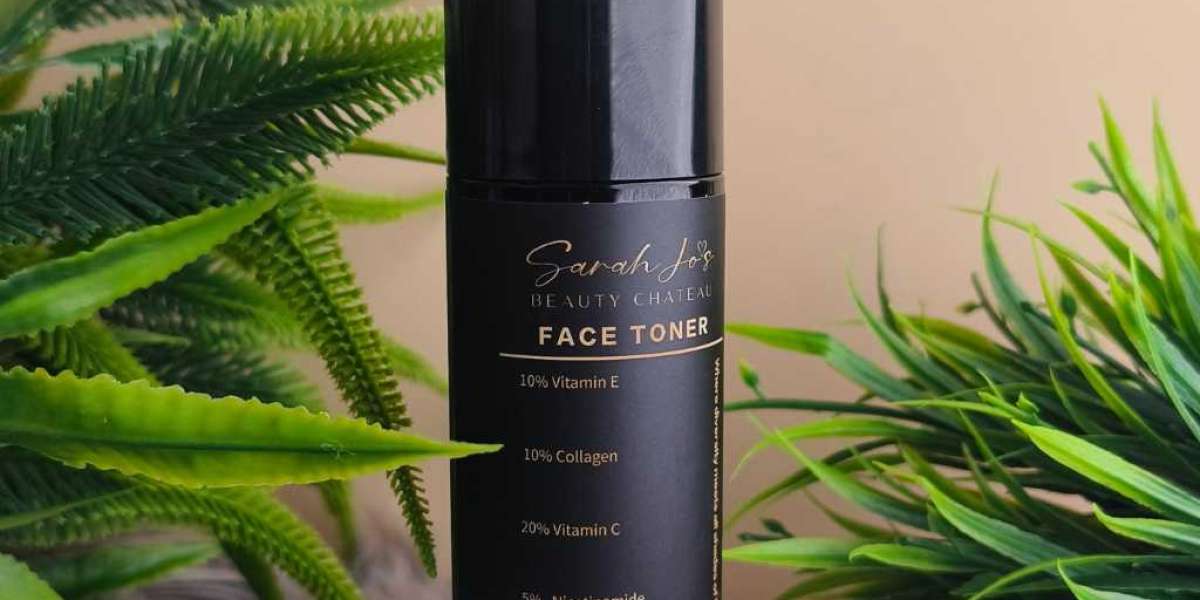In today’s world, the shift towards natural and clean beauty has gained significant traction. Consumers are becoming more aware of the ingredients they put on their skin, opting for products that harness the power of nature. Incorporating natural ingredients into your skincare routine can provide numerous benefits, from reducing irritation to offering effective solutions for various skin concerns. Alongside your favorite face toner, natural ingredients can amplify the benefits of your routine, leaving your skin healthier and glowing.
In this comprehensive guide, we’ll explore the best natural ingredients for your skincare routine and how to use them effectively.
Why Choose Natural Ingredients?
1. Gentle on the Skin
Natural ingredients are often free of harsh chemicals and synthetic fragrances, making them suitable for sensitive skin types.
2. Rich in Nutrients
Plants and botanicals are packed with vitamins, antioxidants, and essential fatty acids that nourish the skin.
3. Environmentally Friendly
By choosing natural ingredients, you reduce your carbon footprint and support sustainable practices.
4. Less Likely to Cause Reactions
Many natural options are hypoallergenic and free from common irritants, making them safer for long-term use.
Key Natural Ingredients to Include in Your Skincare Routine
1. Aloe Vera
- Benefits: Soothes irritated skin, hydrates, and promotes healing.
- How to Use: Apply pure aloe vera gel as a moisturizer or after sun exposure to calm redness and inflammation.
2. Honey
- Benefits: Natural humectant, antibacterial properties, and soothing for dry skin.
- How to Use: Use raw honey as a face mask or mix it with a face toner for a hydrating mist.
3. Green Tea
- Benefits: Rich in antioxidants that fight free radicals and reduce inflammation.
- How to Use: Brew green tea, let it cool, and use it as a natural toner to calm and refresh the skin.
4. Rose Water
- Benefits: Hydrates, reduces redness, and balances the skin’s pH.
- How to Use: Spritz rose water as a toner or mix it with clay masks for added hydration.
5. Turmeric
- Benefits: Anti-inflammatory, brightening, and helps reduce dark spots.
- How to Use: Mix turmeric powder with yogurt and honey for a DIY face mask.
6. Jojoba Oil
- Benefits: Mimics the skin’s natural oils, balances sebum production, and moisturizes.
- How to Use: Use a few drops as a moisturizer or mix it with your favorite serum.
7. Coconut Oil
- Benefits: Deeply moisturizing and antibacterial.
- How to Use: Use as a makeup remover or a night-time moisturizer for dry skin.
8. Witch Hazel
- Benefits: Natural astringent that tightens pores and reduces excess oil.
- How to Use: Apply as a toner after cleansing, especially if you have oily or acne-prone skin.
9. Chamomile
- Benefits: Calms redness and soothes sensitive skin.
- How to Use: Brew chamomile tea and use it as a calming compress or a toner.
10. Oatmeal
- Benefits: Soothes irritation and hydrates dry skin.
- How to Use: Mix oatmeal with warm water for a gentle exfoliating scrub or calming mask.
How to Incorporate Natural Ingredients into Your Routine
Step 1: Cleanse Naturally
- Ingredients to Try: Oatmeal, honey, or castile soap.
- Why It Works: These ingredients cleanse without stripping the skin of its natural oils.
- Tip: Use honey as a gentle face wash for sensitive skin.
Step 2: Tone with Nature’s Elixirs
- Ingredients to Try: Rose water, green tea, or witch hazel.
- Why It Works: Natural toners balance your skin’s pH and prepare it for the next steps.
- Tip: Pair your face toner with rose water for an added boost of hydration and radiance.
Step 3: Hydrate with Oils and Gels
- Ingredients to Try: Aloe vera gel, jojoba oil, or squalane.
- Why It Works: These provide long-lasting hydration without clogging pores.
Step 4: Target Specific Concerns
- Ingredients to Try: Turmeric for dark spots, tea tree oil for acne, or vitamin C from citrus extracts for brightening.
- Why It Works: Natural actives address skin concerns while remaining gentle.
Step 5: Protect Your Skin
- Ingredients to Try: Zinc oxide-based sunscreens or natural oils like raspberry seed oil.
- Why It Works: Protects your skin from harmful UV rays while nourishing it.
DIY Recipes for Natural Skincare
1. Hydrating Face Mist
- Ingredients: Rose water, aloe vera gel, and a few drops of lavender essential oil.
- How to Use: Spray throughout the day to refresh and hydrate your skin.
2. Exfoliating Scrub
- Ingredients: Ground oats, honey, and a splash of lemon juice.
- How to Use: Gently massage onto the skin in circular motions, then rinse.
3. Calming Face Mask
- Ingredients: Chamomile tea, turmeric, and yogurt.
- How to Use: Apply evenly to the face, leave for 10–15 minutes, and rinse with lukewarm water.
Combining Natural Ingredients with Store-Bought Products
Step 1: Use a Natural-Based Cleanser
Start with a mild cleanser that contains ingredients like chamomile or coconut-derived surfactants.
Step 2: Apply Your Face Toner
Choose a toner infused with natural botanicals like witch hazel or rose water to balance and hydrate.
Step 3: Layer with Natural Serums or Oils
Apply a vitamin C serum made from natural citrus extracts or a lightweight oil like jojoba.
Step 4: Finish with a Moisturizer
Opt for moisturizers with aloe vera, shea butter, or green tea extracts for an added dose of hydration.
Benefits of Using Natural Ingredients with Face Toner
Enhanced Absorption
Face toners prepare the skin for better absorption of natural ingredients like oils and serums.
Improved Skin Texture
Natural toners, such as those made with rose water, can smoothen the skin and reduce the appearance of pores.
Customizable Routine
Combining a face toner with DIY products lets you tailor your routine to your skin’s needs.
Tips for a Successful Transition to Natural Skincare
- Start Small: Introduce one new ingredient at a time to monitor your skin’s reaction.
- Do a Patch Test: Always test natural ingredients on a small area of skin before full application.
- Store Properly: Some natural products, like aloe vera gel, require refrigeration to maintain freshness.
- Be Consistent: Natural ingredients take time to show results, so patience is key.
- Know Your Skin Type: Choose ingredients that match your skin’s specific needs.



